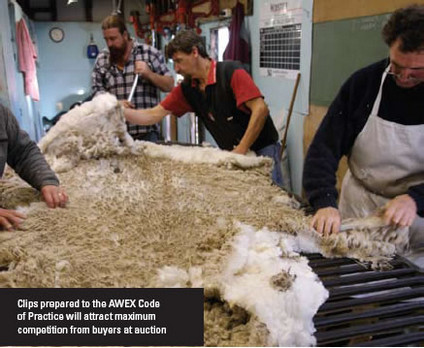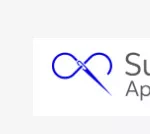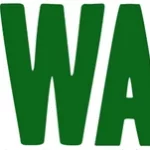The Australian Wool Exchange (AWEX) Code of Practice for the preparation of Australian Wool Clips describes the recommended practices and standards. The code aims to :
- Prepare uniform, consistent, reliable, predictable, low risk lines of wool suitable for the diverse needs of wool processing and so maximise competition from buyers for the wool;
- Present a product free of contamination that is correctly documented, described and packaged.
Australian wool is renowned worldwide for its whiteness and cleanliness. It, therefore, commands premiums compared to wools from other countries.
 Contamination of the Australian Merino wool clip has mostly been associated with dark fibres originating from urine stains and isolated pigmentation found in the fleece. In recent years the introduction of exotic sheep breeds has brought a new and increasing source of dark and medullated fibre contamination. This contamination costs about $100 million each year to remove or correct by picking out from fabric after weaving.
Contamination of the Australian Merino wool clip has mostly been associated with dark fibres originating from urine stains and isolated pigmentation found in the fleece. In recent years the introduction of exotic sheep breeds has brought a new and increasing source of dark and medullated fibre contamination. This contamination costs about $100 million each year to remove or correct by picking out from fabric after weaving.
Dark and medullated fibre contamination
Australian Wool Innovation (AWI)-funded research by CSIRO developed the dark and medullated fibre (DMF) test for use on wool core-samples routinely used for yield and micron testing by the Australian Wool Testing Authority (AWTA). For around $40 (+GST), the voluntary DMF test :
- Enables Australia’s white-wool producers to promote their wool as such to buyers
- Provides buyers and processors with a reliable and quantified measure of the level of dark and/or medullated fibre risk in sale lots.
The Dark and Medullated Fibre Risk (DMFR) Scheme is a voluntary declaration that rates clips for contamination risk and advises purchasers of Australian wool of the likely level of contamination of white wool from traditional natural pigmentation or stains and new sources such as exotic breeds.

